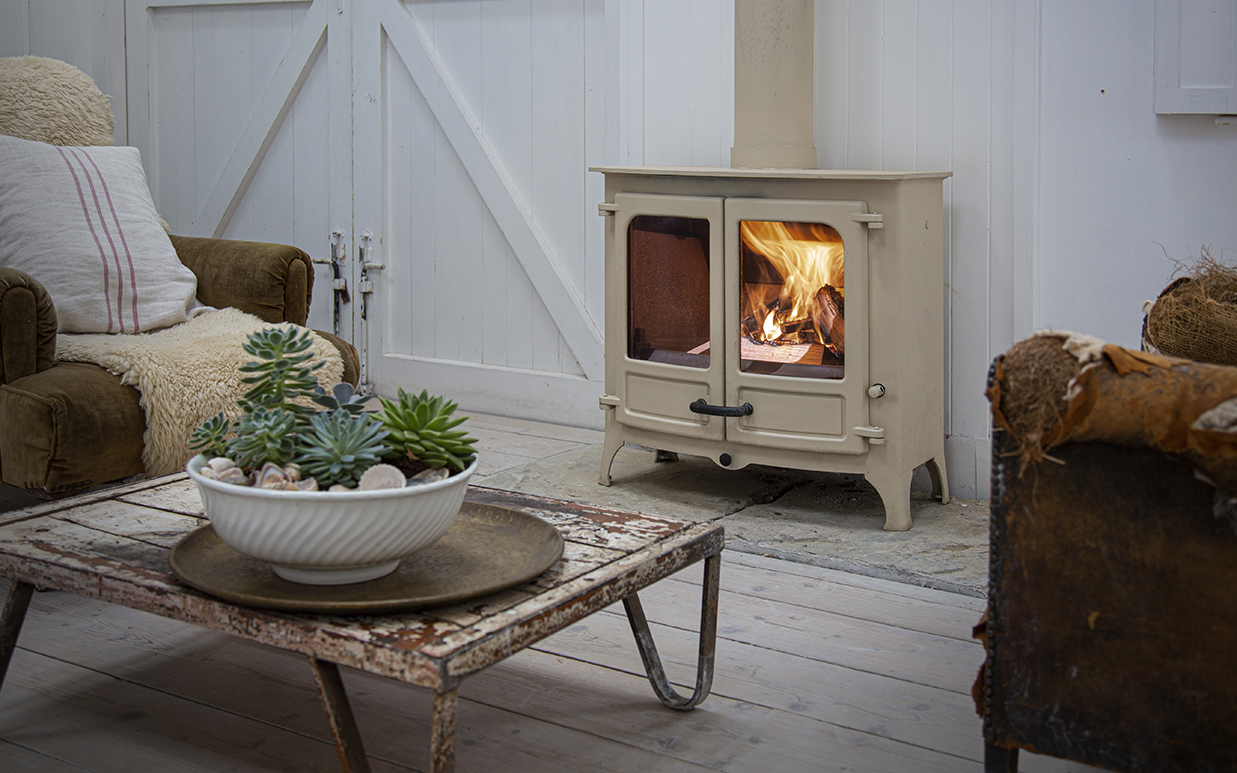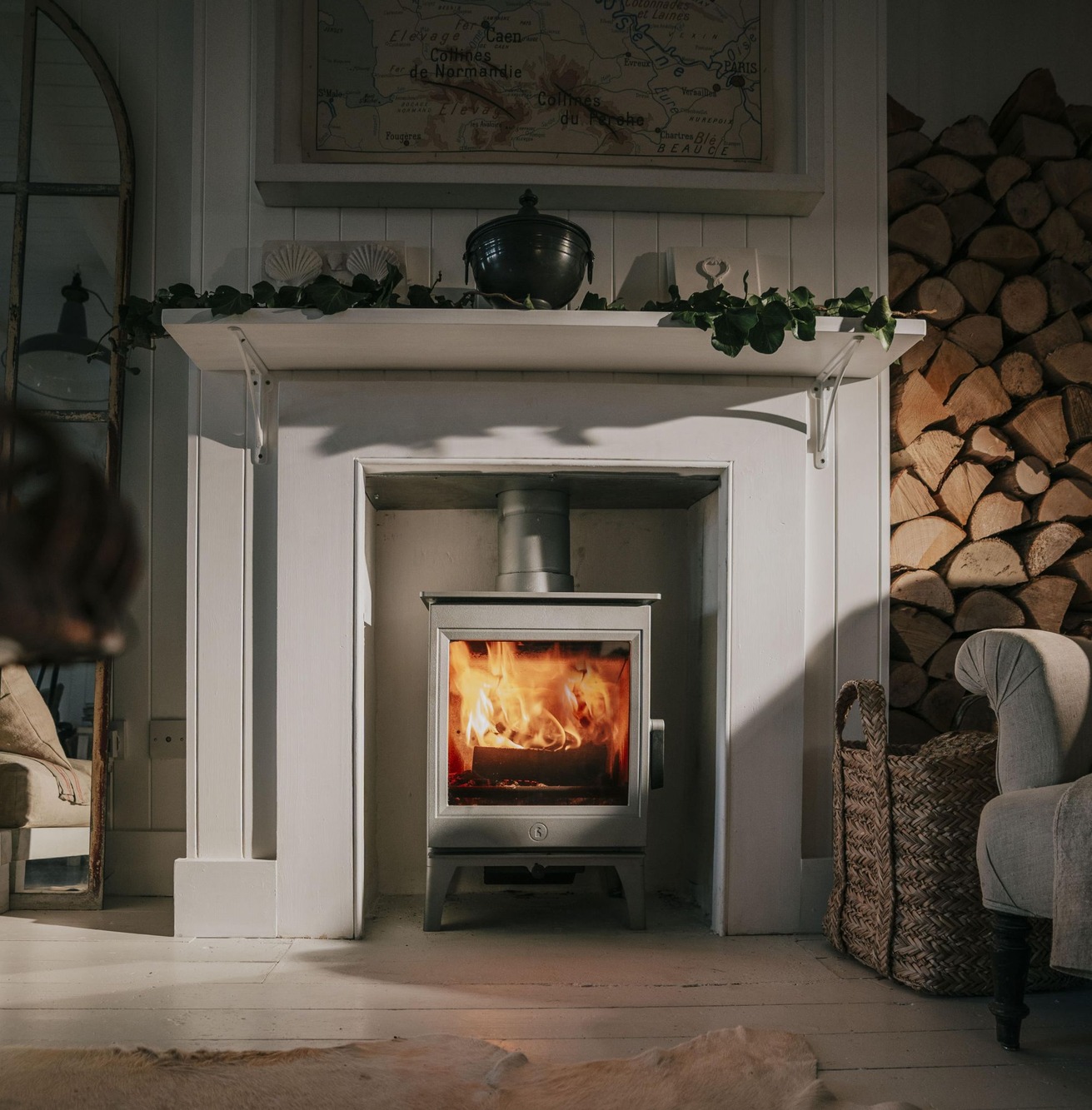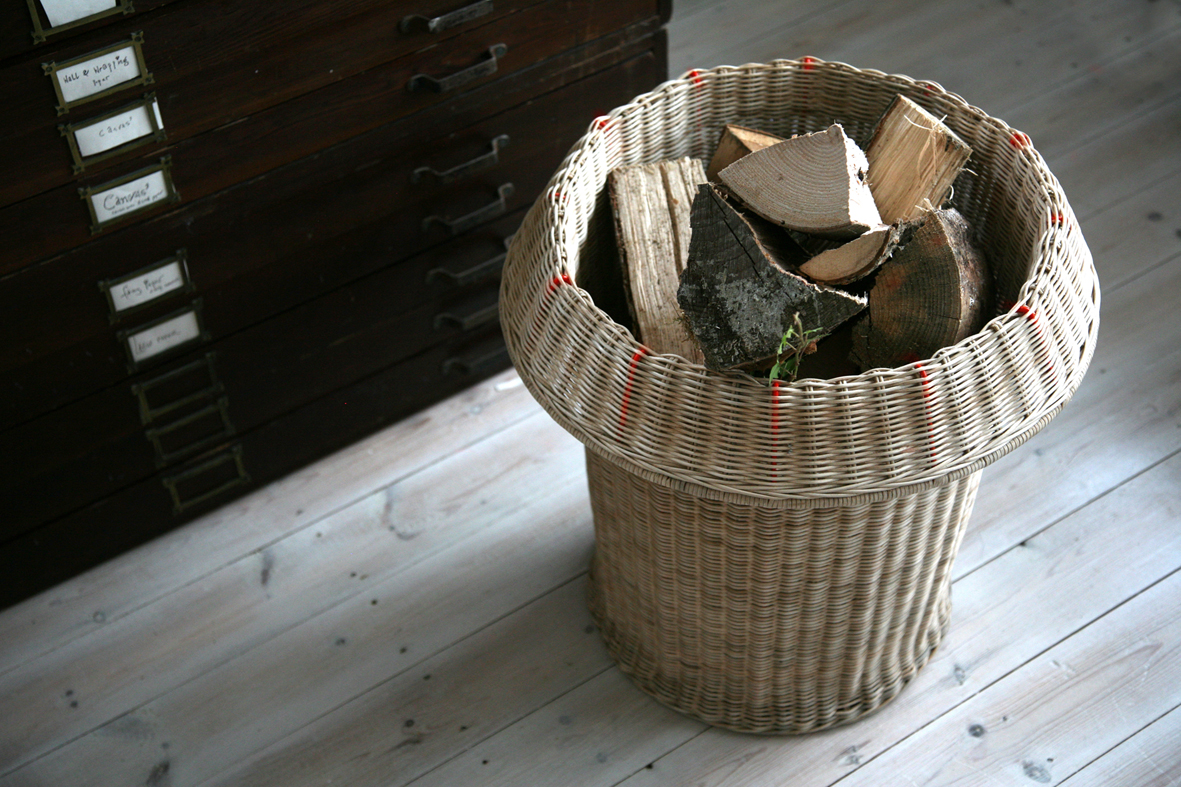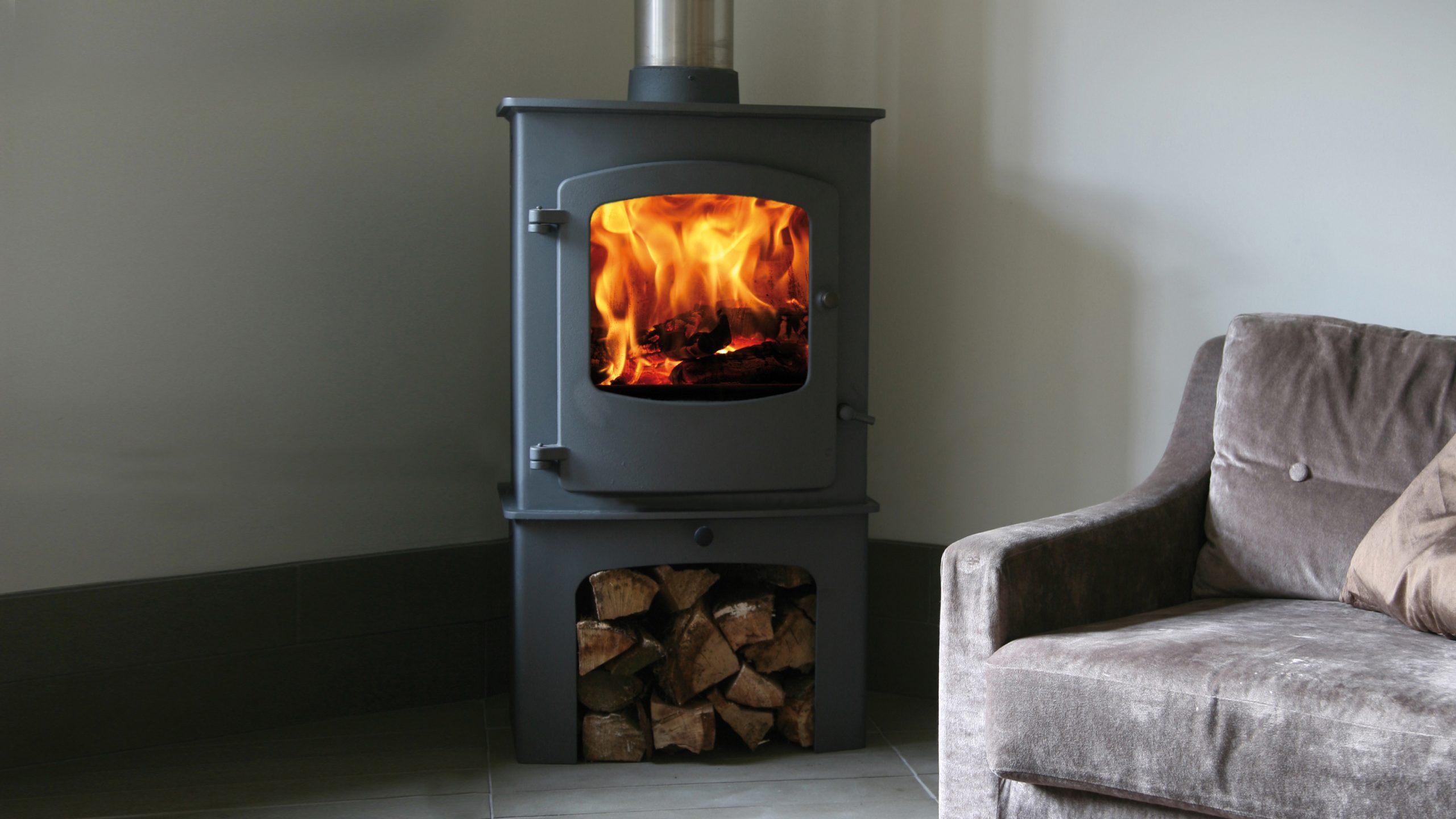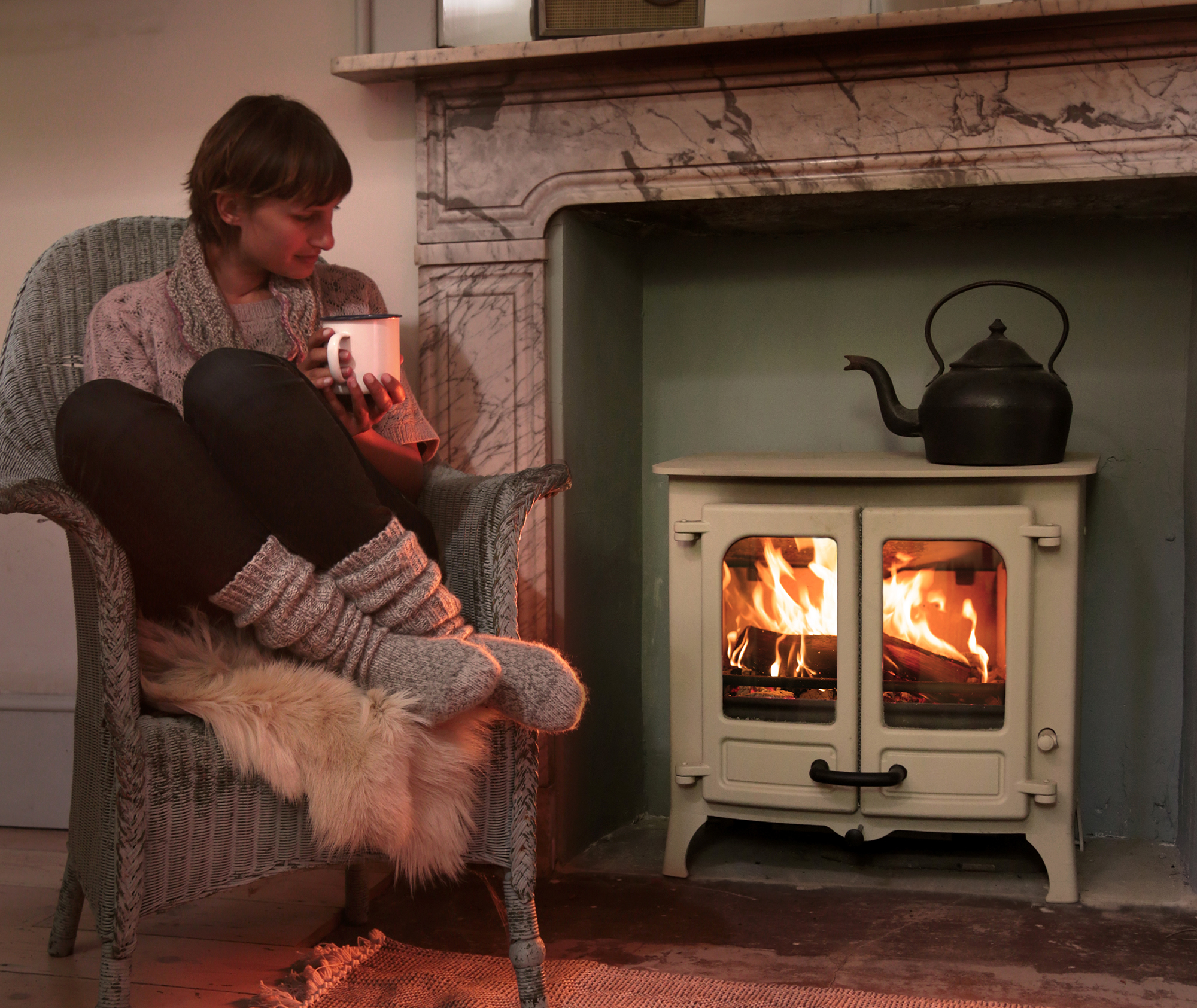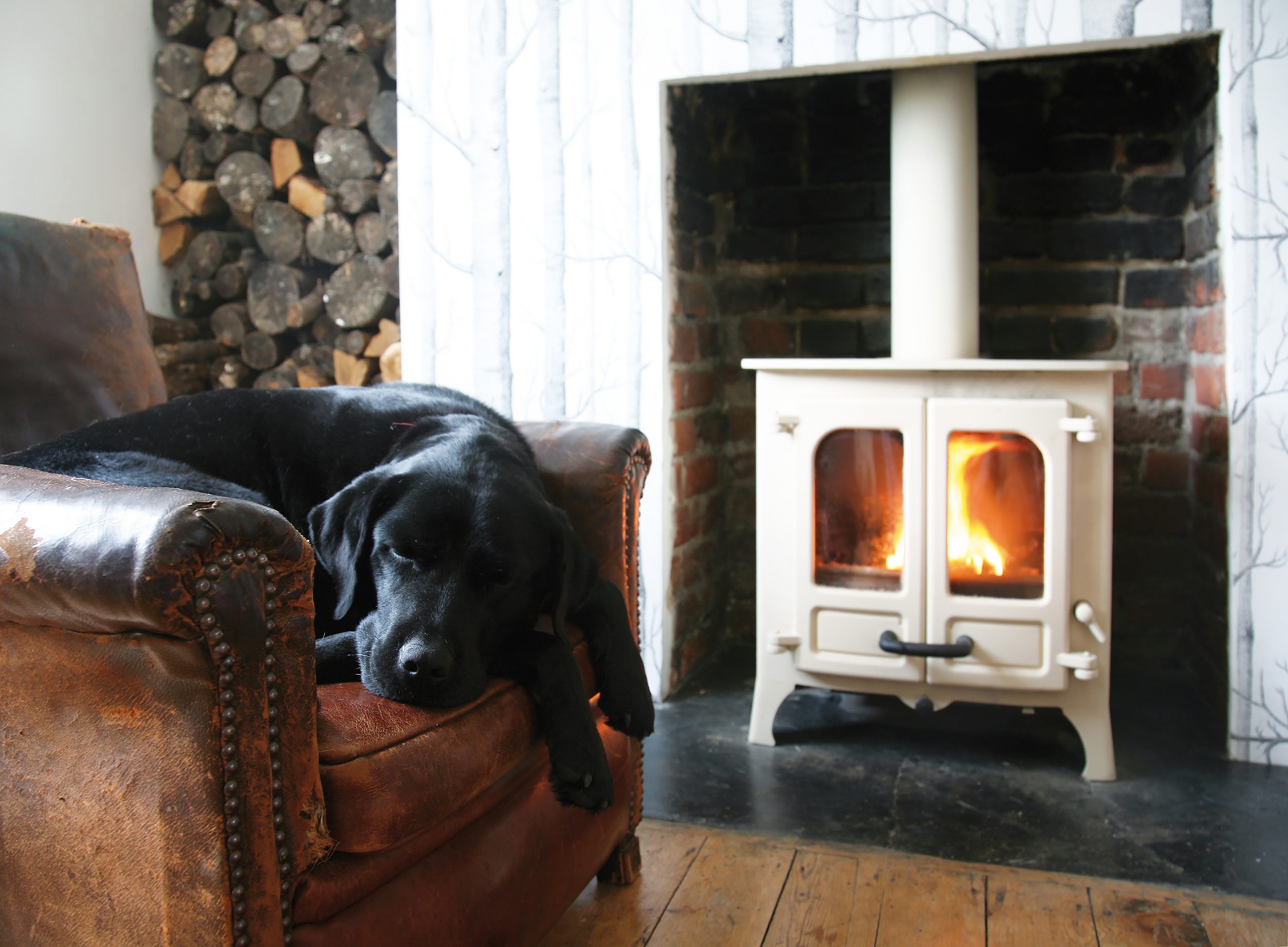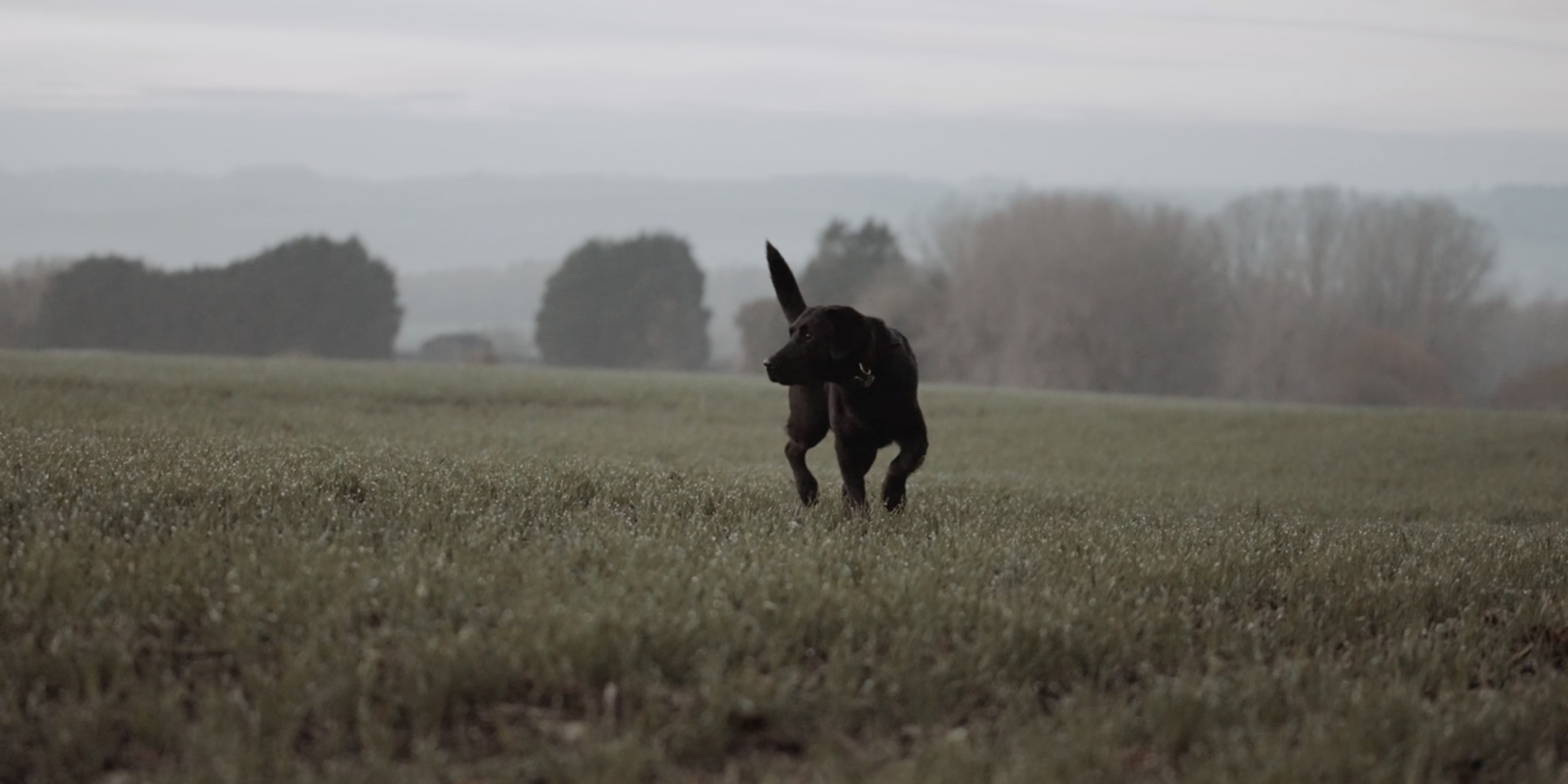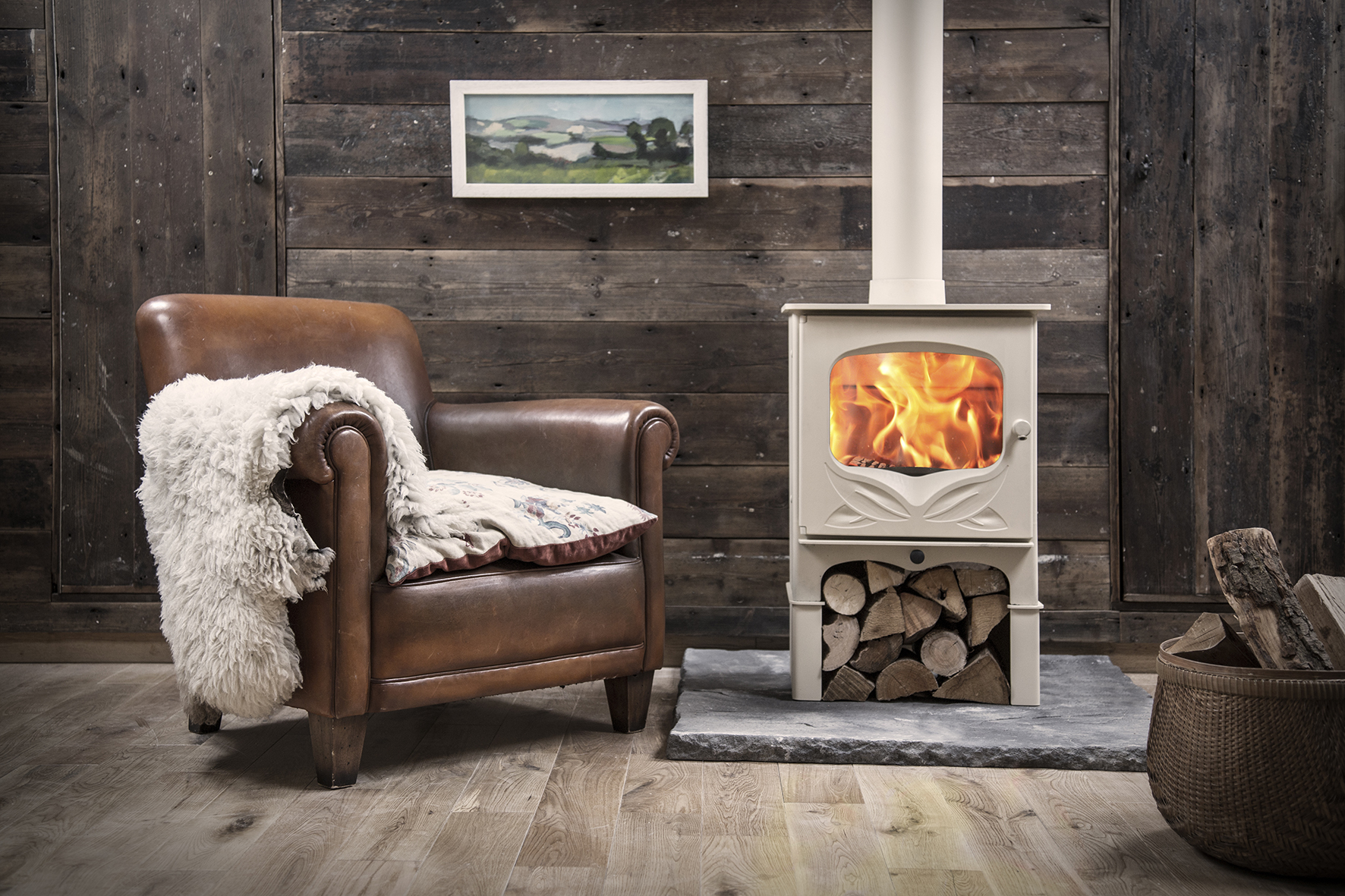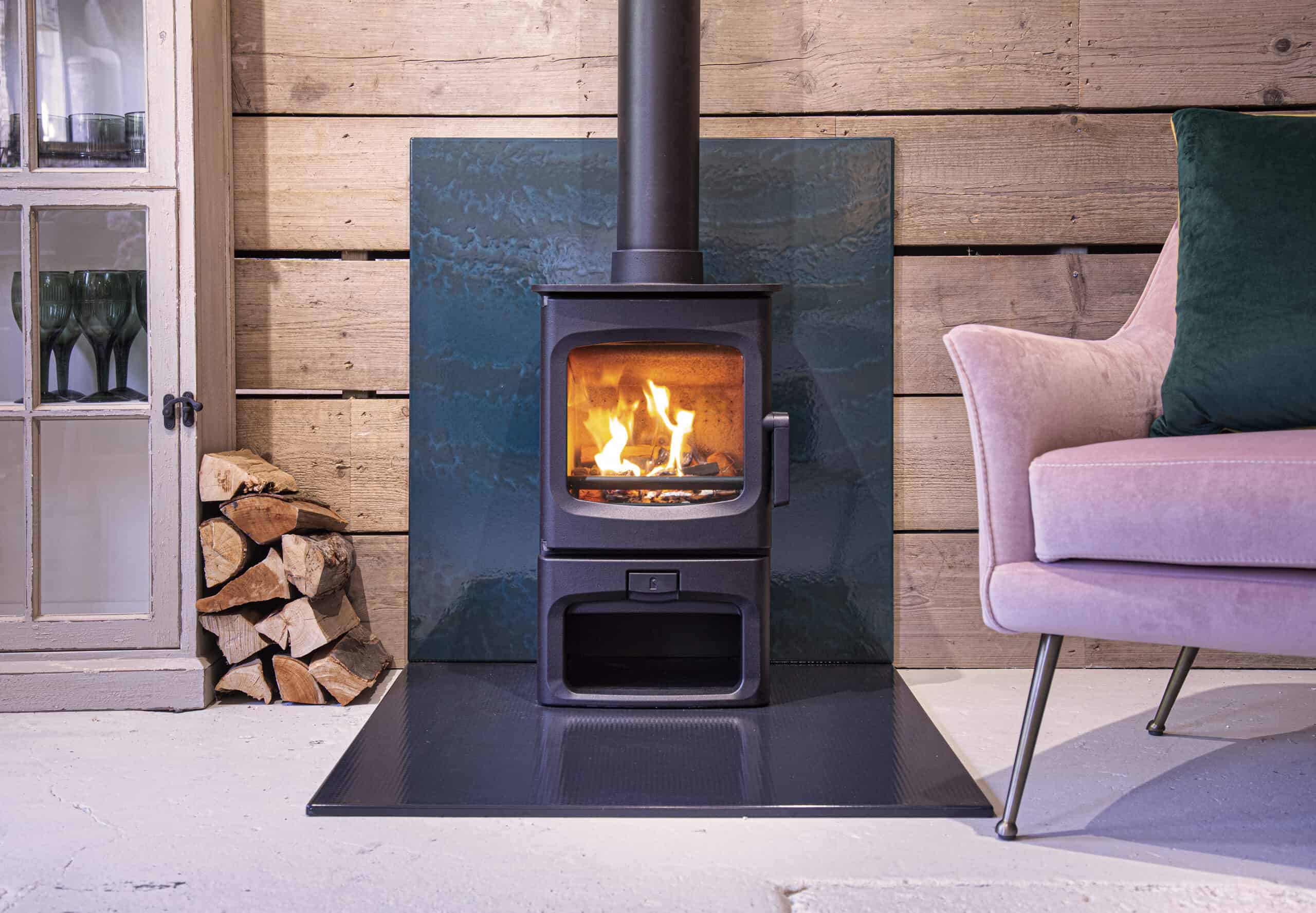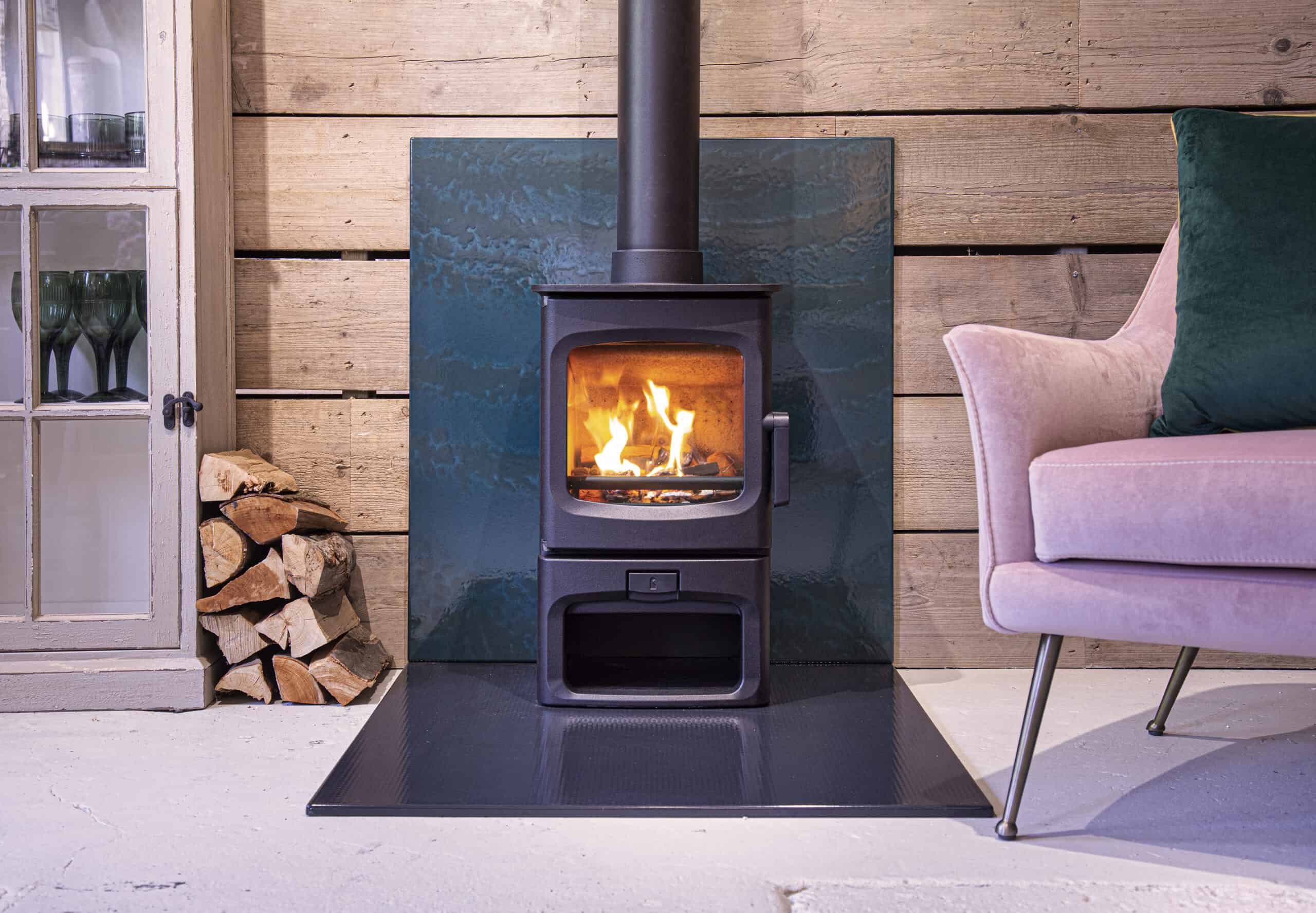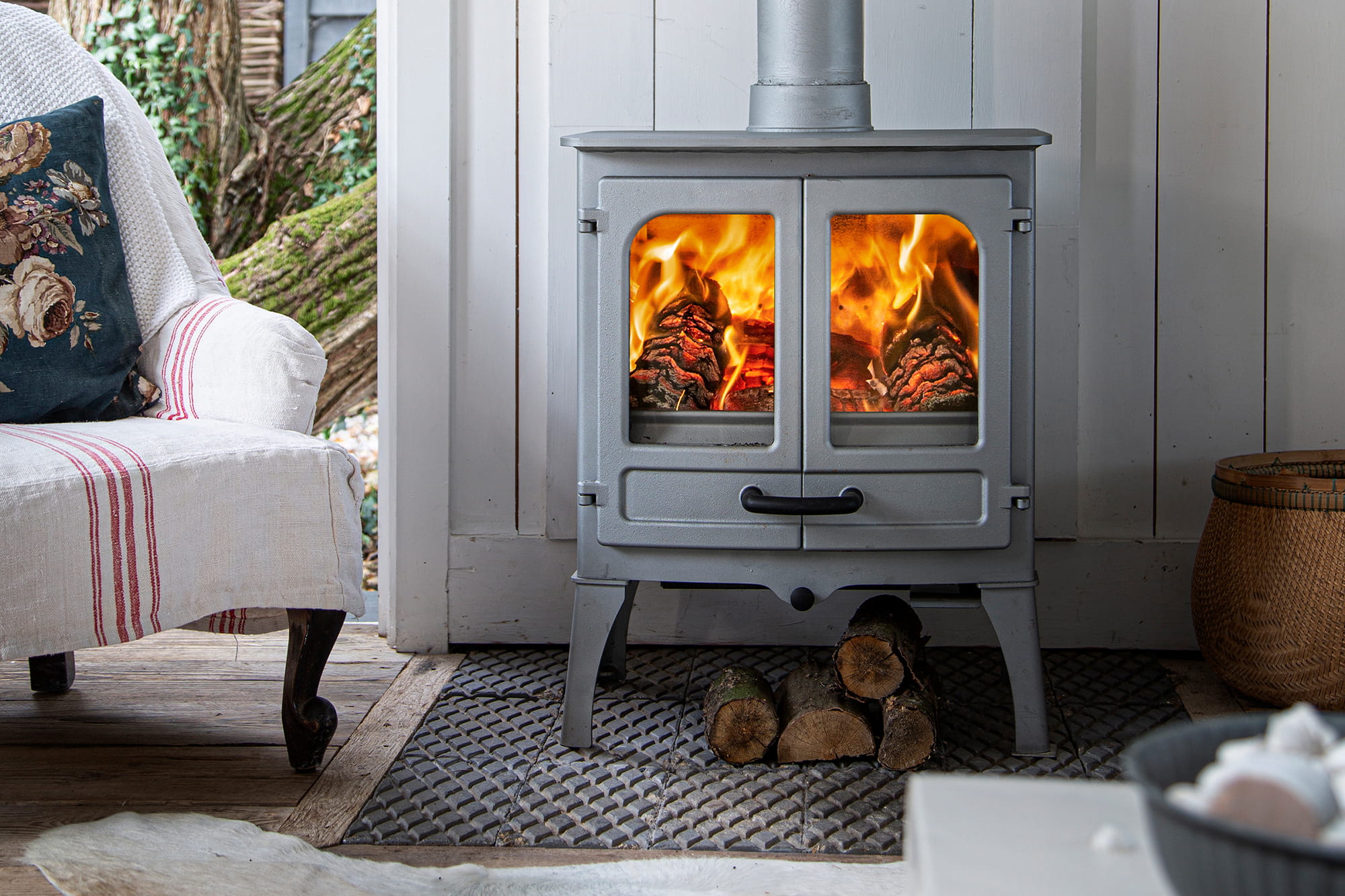With the sudden drop in temperature and an autumn chill in the air, nothing beats a cosy evening nestled by your wood burning stove.
But as we head towards the winter months, your wood burner could need some TLC before its ready to be used more regularly.
To help keep your wood burner well maintained in readiness for those long winter nights, we’ve compiled our tips on how to clean wood burner glass alongside other upkeep advice.
How to keep wood burner glass clean
Your wood burner is not only a source of warmth, it is also a focal point within your home. Many modern generally feature clean-burn air wash which naturally keep the glass clean. However when used regularly, soot may build up on the glass door, which can drastically reduce the view of the fire. The most common cause of this is when wood with a moisture content higher than 20% is burnt or if a burning log is touching the glass.
Here are some do’s and don’ts on how to keep wood burner glass clean.
Do…
• Use a damp crumpled paper towel or newspaper, dip it in fine wood ash and use this to rub the stove glass clean.
• If there is substantial build up on the glass, burn a high temperature fire in the wood burning stove before you try to clean the glass. Ensure you have plenty of well-seasoned wood in your wood burner to create a fire of a high temperature.
• Make sure you use a wood stove glass cleaner, or a ceramic stove top cleaner.
• Ensure you wait until the wood burner glass is cool before you attempt to clean it.
• Clean your wood burner glass on a regular basis to prevent a build-up of soot.
Don’t…
• Never attempt to clean your wood burner glass when there is a fire burning inside the stove or the surface is hot.
• Avoid spraying water on hot wood burner glass – this could cause the glass to crack or shatter.
• Never use sharp objects or abrasive cleaners to clean your wood burner glass – these could damage and scratch the surface of the glass.
How to clean a wood burner
When it comes to cleaning your wood burner, there are many interior and exterior elements to consider.
Ensure exterior surfaces are cleaned with a soft brush, damp cloth or a vacuum cleaner. These will effectively remove any soot and dirt when the stove is cool.
Take the time to empty out the ash pan and firebox completely when your wood burner is not being used. Inspect the rope seals on the doors and flue, as it is not uncommon for these to become damaged through everyday wear and tear.
Find out more wood burning stove cleaning tips and tricks in our blog: How to clean your wood burning stove.
Why is my wood burner smoking?
If your wood burner is smoking, there could be several reasons, including:
• A blocked chimney
• The wrong fuel is being used
• An issue with the air pressure in the room
• A problem with the draw of your chimney
• A cold weather snap
To stop your wood burner from smoking, you need to ensure you have the correct air pressure, no chimney blockages and are burning the correct fuel. If you have any further questions about your smoking wood burner, contact us today.
Find out everything you need to know about having your wood burner in your house.
Why does my wood burner smell?
If your wood burner is emitting an unpleasant smell, it is unlikely that this is coming from the wood burner or stove itself. The smell is more likely being caused by other factors, including:
• The stove is new and requires a ‘break in’ period
• The fire is releasing too much smoke
• Burning damp wood which contains too much moisture
• Burning polluted wood
• The fire isn’t hot enough
• Blocked chimney or flue
• Insufficient chimney size which cannot easily remove waste smoke and gases
• Wet weather
• If the weather is much lower than usual and smoke and gases cannot leave the home properly
• Reduced airflow
Find out how to light a wood burner.
Why is my wood burner not getting hot?
If your wood burner is not getting hot, this could be due to a variety of reasons:
• The draft on the stove is poor – draft on the stove is needed to suck air from the stove out of your home. If the waste gas is unable to escape, fresh air won’t be getting to the fire and this will prevent the stove from heating. Test the draft by lighting a piece of paper on one end and placing it under the flue outlet inside your stove. If the smoke disappears, the draft should work effectively when the fire starts.
• The air vents need opening – if the air vents aren’t open enough, it will prevent oxygen getting to the fire. Open up the air vents and create a larger supply of oxygen to enable to the fire to burn through the wood more quickly.
• The air vents are open too much – if the air vents are opened too much, the stove may not get hot. While the air vents should be opened fully when the fire is being lit to maximise oxygen levels, these can be gradually closed down as the fire gets hotter to ensure too much air isn’t getting to the fire.
• Lack of secondary combustion – this process involves maximising heat from burning wood by burning off waste gases from the fire. Secondary combustion will only occur when a higher temperature is reached.
• Fire incorrectly lit/built – if a fire is built and lit incorrectly, it will prevent the stove from getting hot. Lay crumpled pieces of paper on the bed of the stove to help encourage the fire to spread to the wood. Softwood kindling can then be placed on top of the newspaper, followed by smaller logs once the fire has caught.
• Wet wood – if your wood is too wet, the excess moisture will prevent your wood burner from getting hot. We recommend a 20 per cent or lower moisture content threshold for firewood. If your wood contains more moisture than this, it will need to be dried out for a further season before if can be used.
Find out more in our blog: How to use a wood burning stove.
How often should I sweep my wood burner chimney?
We recommend that wood burner chimneys are cleaned at least once a year. This should take place when the temperature drops in the cooler months before the wood burner is used more regularly.
Contact Charnwood today
To find out more about keeping your wood burner well maintained, contact Charnwood today. Our friendly, expert team are on hand and more than happy to answer any queries you may have.
Why Choose Us?
At Charnwood Stoves, we understand the importance of keeping your wood burner glass clean and clear for optimal enjoyment. With our extensive experience in the industry, we offer a range of high-quality cleaning products specifically designed for wood burners.
Our innovative solutions effectively remove soot, tar, and residue, restoring the beauty of your stove. Trust us to provide you with reliable and eco-friendly products that make maintenance effortless, allowing you to focus on cozy moments by the fire. Choose Charnwood for superior glass cleaning solutions tailored to your needs.
Contact our team today.

